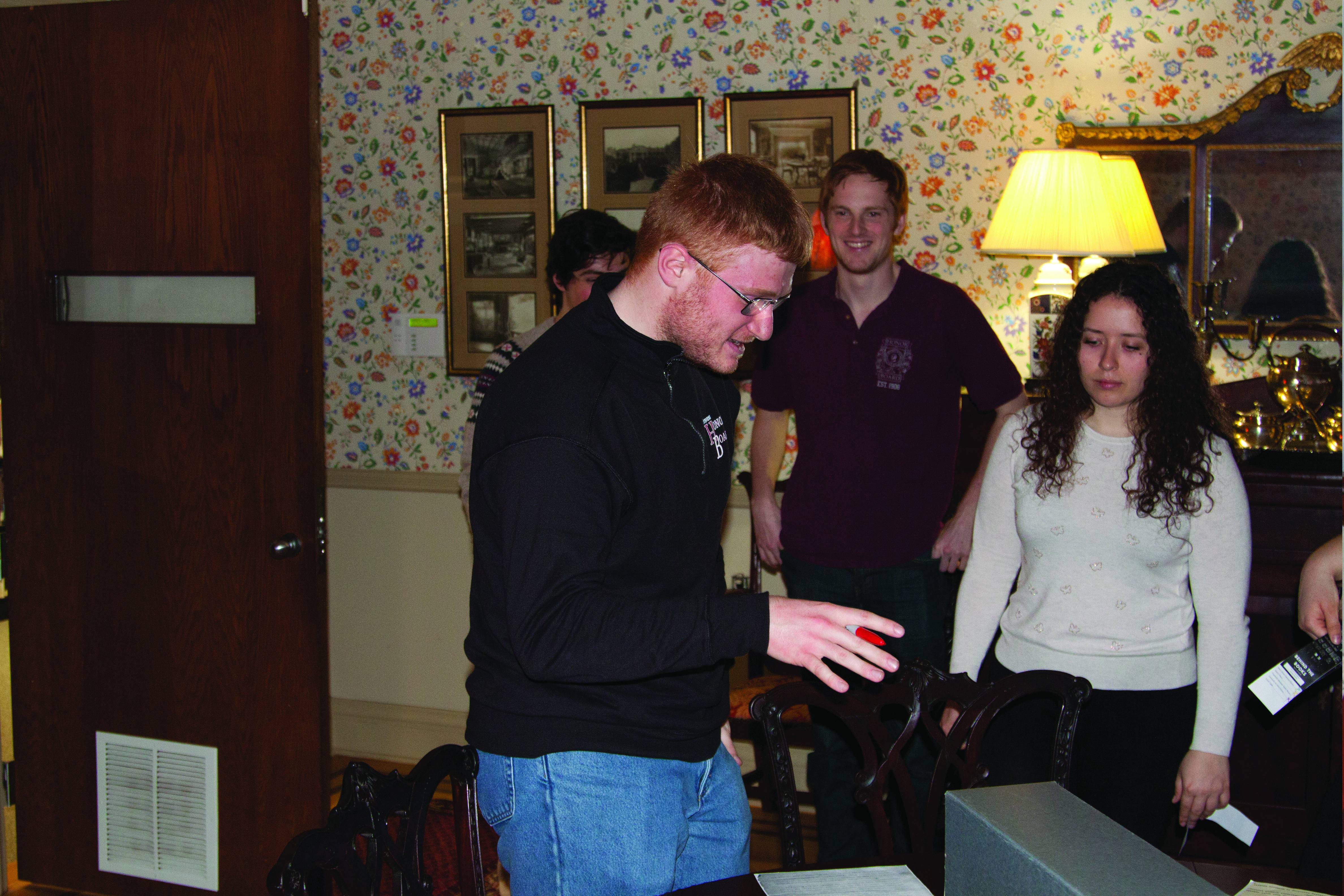Several exhibit rooms in the Samuel C. Williams Library were opened for viewing during the annual Behind the Books on Wednesday evening, co-hosted by the Honor Board and Gear and Triangle. Several alumni of the Honor Board joined undergraduate students in a viewing of the unique collections housed in the library.
Students were able to walk a self-guided tour through the library to four open rooms. Members from the Honor Board and Gear and Triangle were stationed in each room to provide general historical context and facilitate the hands-on exploration of some artifacts. An additional exhibit about campus traditions was constructed by the library’s professional staff and displayed in Sam’s Place.
“I get very excited to see the infectious enthusiasm and engagement the students have for our history and historical collections. I really feel that events like Behind the Books instills a greater sense of pride for Stevens and really brings our important and sometimes hidden history and historical collections to life,” said Leah Loscutoff, Head of Archives & Special Collections.
The Mary Stuart Stevens Room is located on the first floor of the library, off of the Great Hall. The room is decorated with artifacts from the original Castle Stevens, portraits of Stevens family members, and display cases containing historical objects signifying Stevens family achievements. Several free print copies of a painting by F. Giudici ’89 picturing the Castle were available.
On the second floor is the Frederick Winslow Taylor Room — a small biographical museum dedicated to Taylor, who earned a degree in mechanical engineering from Stevens in 1883 and later became the “Father of Scientific Management”. The collection covers much of Taylor’s contributions as a pioneer in shop management and efficiency, including prototypes of his well-known metal cutting tools; his sports-related inventions, including a two-handed putter and innovative tennis racket; and, his more personal pieces, such as his diploma and typed letters.
Daniel Fenton, a 4/5 mechanical engineering student said, “I wish they had this event more often because I think it’s important that Stevens students know this stuff is available to be seen – not only the Stevens history.”
“Once a year I come to the library, just for this,” said Zachary Calderola, a senior graduating with both a Bachelor’s and Master’s in computer science.
Adjacent to the Taylor Room is the Lieb Memorial Leonardo da Vinci collection, donated by John William Lieb. Lieb earned his Master’s from Stevens in 1880 and spent over a decade in Italy for work under direction of American inventor Thomas Edison. The Stevens alumnus returned with an incredible fascination with da Vinci, as both an engineer and philosopher. Posthumously, the collection was dedicated to the university. Students had the opportunity to handle old books such as Divina Proportione, authored by da Vinci’s math tutor with geometric illustrations by da Vinci dating all the way back to 1509.
“I love this event because I think it’s important to learn about our schools history by seeing the actual contributions made by our alumni,” said Jose Angeles, a 4/5 electrical engineering student.
The Campus Traditions exhibit was brought back out for viewing in Sam’s Place. The display was curated by Ted Houghtaling, Archivist and Digital Project Librarian, and was setup in the first floor display cases for from October 2017 through March 2018. The display system included samples of The Link and The Stute archives. According to Library Director Linda Beninglove, the Campus Traditions exhibit will be reinstalled and expanded for this year’s Commencement celebrations on campus.
Beninglove commented, “Behind the Books offers a unique and memorable opportunity for the Library Staff to connect with student organizations, learn more about students’ diverse interests and knowledge, and to contribute to a sense of pride in Stevens history. It is so exciting and inspiring to see students become interested in the fascinating artifacts in the Library Archives and Special Collections. We hope students will continue their interest in the impact of Stevens throughout history, and we hope students will come back to campus and visit the Library as Alumni.”

Be First to Comment